As America’s downtown districts keep evolving, they offer more options than ever for environmentally friendly meetings
The annual meeting of the American Epilepsy Society (AES) has been held in U.S. cities from coast to coast, but regardless of which destination they choose, the event’s planners tend to keep their business in the downtown district.
“Downtown areas give us what we want in terms of ease of access,” says Elizabeth Kunsey, CMP, manager for meetings and events for AES. “Our event is like a big reunion. People love to go out with their colleagues, so the availability of restaurants is also very important.”
One of the key advantages of holding meetings in downtown districts is the walkability and reduced environmental impact. At the most recent AES meeting, in Washington D.C., attendees had options to stay in one of seven hotels, yet because of the area’s density, no one had to walk more than eight blocks to get to Walter E. Washington Convention Center.
“Sustainability is one of our organization’s goals, and in the U.S., we’re lucky to have a lot of choices,” Kunsey says. “The convention business is so big in our country that we all benefit when the cities try to compete against each other.”
Many U.S. cities have continued to invest in their urban cores, refurbishing old buildings while standing up new hotels, conference centers and other venues. That’s good news for meeting planners, particularly those interested in creating accessible, low-environmental-impact meetings. Here are snapshots of 15 U.S. cities, with tips on how your group can “go green” in each of them.
Atlanta
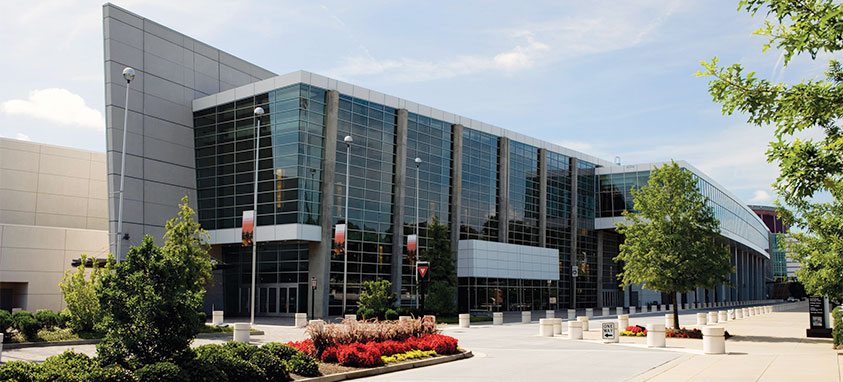
Boasting 1,800 hotel rooms and 2.1 million sq. ft. of meeting and event space, Atlanta’s convention and entertainment district is getting a major upgrade. At the heart is Georgia World Congress Center (GWCC), which is adding another 1 million sq. ft. of exhibit space, as well as a high-end, 1,010-room convention hotel.
“This is the single-biggest thing that has happened to Atlanta’s convention and entertainment district since the opening of GWCC,” says Mark Vaughan, executive vice president and chief sales officer for Atlanta Convention & Visitors Bureau.
Groups staying in Atlanta’s downtown can easily walk to popular destinations such as Centennial Olympic Park (which is adding multi-use event capability), Center for Civil & Human Rights, World of Coca-Cola, Georgia Aquarium and CNN Center.
Baltimore
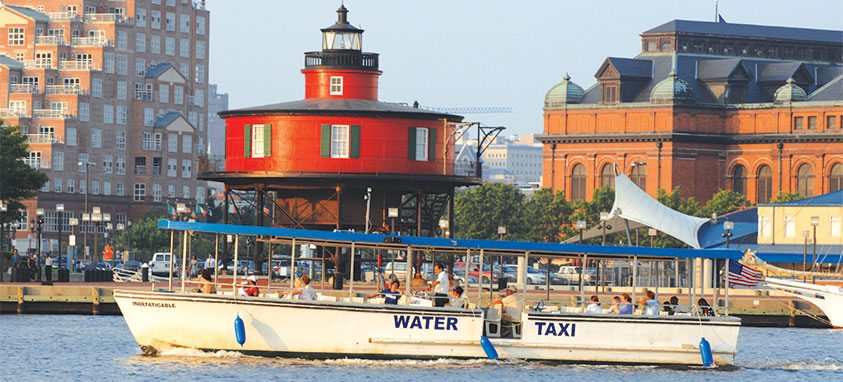
From sampling crab cakes at Lexington Market to taking in a show at Hippodrome Theatre, a classic 1914 venue, groups can find plenty to do in downtown Baltimore. They can also walk a short distance to Inner Harbor, on the banks of Chesapeake Bay, to check out attractions such as National Aquarium.
“Baltimore offers the perks of a big city without the price tag,” says Al Hutchinson, president and CEO of Visit Baltimore. “The Baltimore Convention Center campus is just steps away from beautiful waterfront views, and the Baltimore Water Taxi is waiting to take you to other waterfront neighborhoods such as Fell’s Point, Federal Hill, Harbor East and Canton.”
Boston
From the Freedom Trail to the cobblestones of Beacon Hill, downtown Boston is walkable and historically significant. The warmer months are a great time to enjoy green spaces such as Boston Common and Rose Fitzgerald Kennedy Greenway, a 1.5-mile park edging downtown, with gardens, sculptures and an open-air beer garden.
More than 35 new hotel projects are in the works for greater Boston, and 5,000 new hotel rooms are set to come online in the next five years, mainly around South Boston Waterfront, near Boston Convention & Exhibition Center. Hyatt Regency Downtown recently completed a $13 million renovation, and Wynn Boston Harbor, America’s first five-star urban gaming resort, is scheduled to open in June 2019.
Chicago
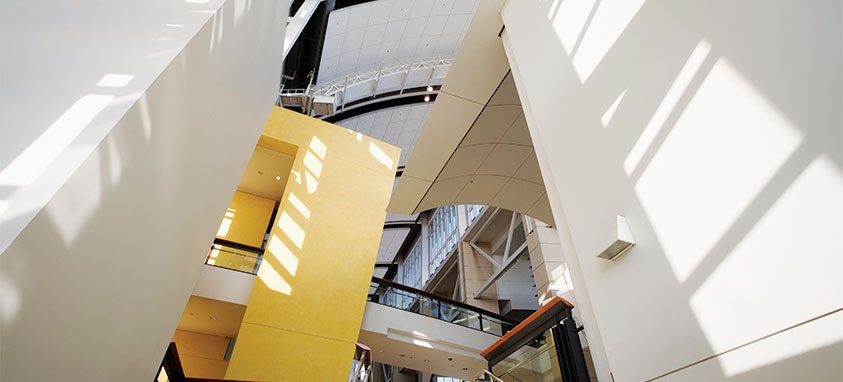
The Windy City, third-most populous city in America, shows no sign of slowing. “We have opened 26 new hotels just in the past three years,” says David Whitaker, president and CEO of Choose Chicago. “You’d be hard-pressed to find a city and people more welcoming and down to earth. It makes a huge difference on the delegate experience.”
McCormick Place Convention Center, the largest convention center in North America, offers a whopping 2.6 million sq. ft. of exhibit space and 173 meeting rooms; and for convenience, Marriott Marquis Chicago (more than 1,200 guest rooms) and a 10,000-seat event center connect to the McCormick via skybridge. The Collection at McCormick Square, surrounding the area, features event spaces, breweries and restaurants.
Denver
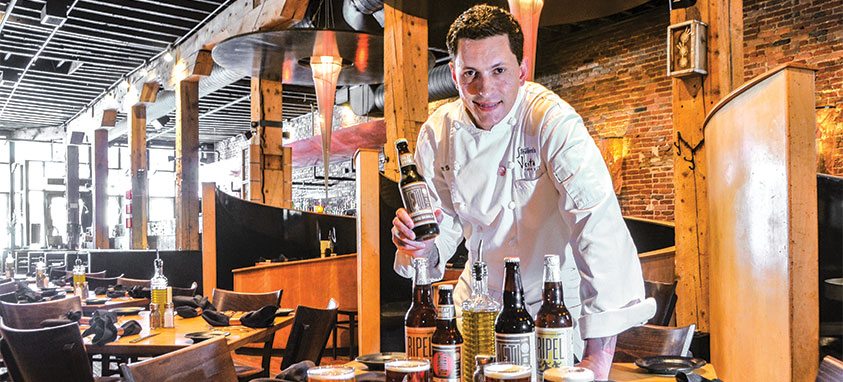
Downtown Denver has 10,000 rooms within walking distance of Colorado Convention Center, and public transportation options such as light rail and the 16th Street MallRide make it easy to explore. Also within easy reach are four museums, 10 performing arts theaters and Elitch Gardens, an amusement park. Denver has risen in ranks among food cities: Top Chef recently videoed episodes there, and 245 restaurants opened in 2017.
“With a mild climate and 300 days of sunshine, Denver is a great year-round meeting destination with a compact, walkable downtown area,” says Rachel Benedick, vice president of sales and services for Visit Denver, the city’s CVB. “Denver has seen explosive growth in dining options, with new collaborative, local marketplaces; chef-driven restaurants; brew-houses; and hyper-local fine-dining springing up.”
Fort Lauderdale
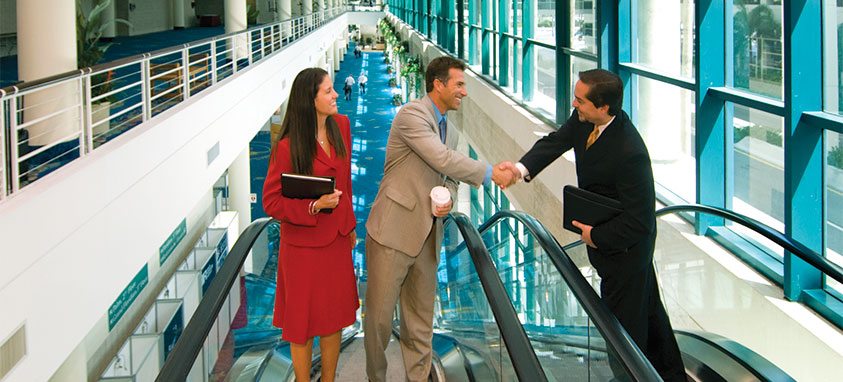
Just 30 miles north of Miami in South Florida, Fort Lauderdale’s downtown is a great focal point for exploring local sites such as Bonnet House, a 1920s home with tropical charm; Museum of Discovery & Science, which can host events for up to 3,000 guests; and Nova Southeastern University Art Museum, which can be rented for events or team-building art classes. New hotels include Conrad Fort Lauderdale Beach, which opened in October; and W Fort Lauderdale, which recently completed a $55 million renovation.
“Aside from the gorgeous weather year-round, our downtown is just minutes from the beach,” says Stacy Ritter, president & CEO of Greater Fort Lauderdale Convention & Visitors Bureau. “You can enjoy the excitement of a big city without the expense.”
Los Angeles
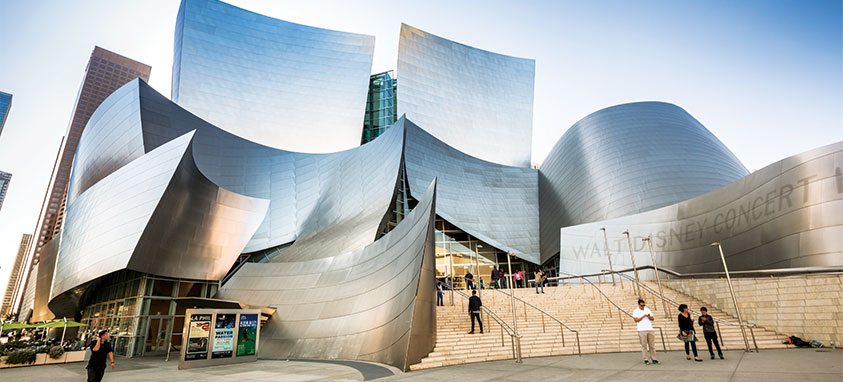
Who says you need a car in Los Angeles? With rooftop bars, breweries and restaurants, downtown has everything a group needs for a winning conference. Venues include the Frank Gehry-designed Walt Disney Concert Hall; Oue Skyspace LA, located on the 69th and 70th floors of US Bank Tower; and Vibiana, a former Catholic cathedral transformed into an event facility. Last year saw the opening of InterContinental Los Angeles Downtown, inside a 1,100-foot-high skyscraper.
“If you haven’t been to Downtown L.A. recently, you might not recognize it,” says Darren K. Green, senior vice president of Los Angeles Tourism & Convention Board. “It’s undergone a renaissance in recent years that has truly elevated the region to become one of the most dynamic meeting destinations in the country.”
Minneapolis
February 4, 2018, marks the moment the people of Minneapolis have long waited for, as the city will host Super Bowl LII in newly built US Bank Stadium. There are a multitude of reasons Minneapolis was chosen: In addition to having three pro sports stadiums, the downtown core is home to theater, museums, dining and much other fun. Eight new hotels have opened in the last 1 1/2 years, adding more than 1,200 new guest rooms.
“Minneapolis has undergone a big transformation,” says Melvin Tennant, CAE, president and CEO of Meet Minneapolis. “The biggest feature of this growth is that much of it has been organic, which adds to the authenticity of the visitor experience. There has been more than $2 billion dollars spent on infrastructure improvements.”
New York City

Lower Manhattan, the “downtown” of the Big Apple, affords easy access to world-famous attractions such as the Statue of Liberty and 1,776-foot tall One World Trade Center, the tallest building in the Western Hemisphere. Group options include cooking classes at Eataly NYC Downtown, history tours with Wall Street Walks and chartering a boat tour around Ellis Island.
“Due to the neighborhood’s resurgence—especially prominent hotels opening in the past few years—there are countless options for restaurants, attractions and nightlife in the area, which has truly become a 24/7 destination,” says Jerry Cito, senior vice president of convention development for NYC & Company.
Newport
Known as America’s First Resort for its more than 300-year history as a getaway destination, Newport, Rhode Island, has a vibrant downtown center with a historic vibe, and more than 900 hotel rooms.
“As you walk along Newport’s cobblestone streets, through bustling downtown, vibrant wharves and tony Bellevue Avenue, you can’t help but be surrounded by our rich history and captivating architecture,” says Andrea McHugh, senior communications manager for Discover Newport.
Phoenix
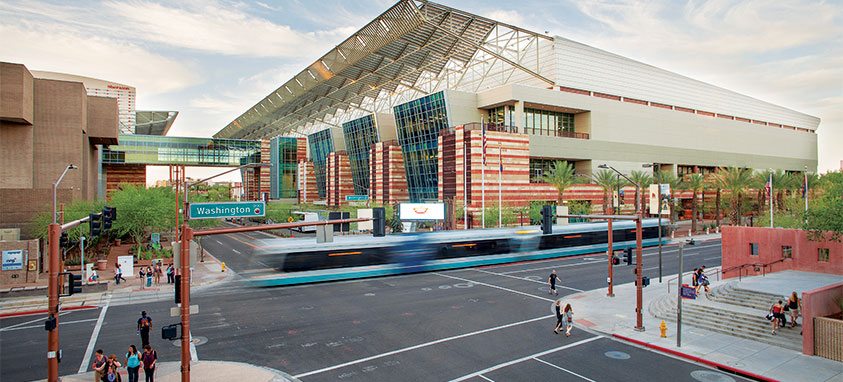
Phoenix has a new $650 million convention center, a 20-mile light-rail system and a new 1,000-room hotel—all within 4 miles of Phoenix Sky Harbor International Airport (PHX).Downtown’s Roosevelt Row was named one of the 10 Best City Arts Districts in America by USA Today.
“America’s fifth-largest city still has cowboys and red-rock buttes, and the kind of cactus most people see only in cartoons,” says Doug MacKenzie, director of media relations for Visit Phoenix. “You only have to look at a few neighboring blocks downtown to see how Phoenix elevated itself into the upper echelon of meeting destinations. These are paradigm-shifting additions, and they enhance Phoenix’s value as a meeting destination at a time when value and attendance are more important than ever.”
Providence
A city of 180,000 residents, Providence, Rhode Island, mixes New England charm with industry, while the presence of Brown University, Rhode Island School of Design, and Johnson & Wales University (JWU) lends a hip and youthful vibe. From May through November, the city’s waterfront lights up with WaterFire, an art installation with bonfires and music.
Rhode Island Convention & Entertainment Complex is in the heart of Providence’s downtown and, in addition to Rhode Island Convention Center, encompasses Dunkin’ Donuts Center (an arena) and Veterans Memorial Auditorium. “Attendees can step outside their hotel or the [convention center] and walk to dinner or a touring Broadway show within minutes,” says Thomas Riel, vice president of sales and services for Providence Warwick Convention & Visitors Bureau.
San Antonio

When Alysa Perry, meeting manager for Boston-based Public Responsibility in Medicine and Research, was scouting locations for a convention for more than 2,500 attendees, she knew what she needed. “We don’t provide a lot of sponsored entertainment or dinners, so one of the first things I do when researching a destination is to search nearby to see how many restaurants show up,” Perry says.
Last year, her group came to San Antonio, which offers 14,000 hotel rooms in the downtown area, many centered around the city’s famous Riverwalk. Everyone was able to stay within two blocks of Henry B. Gonzalez Convention Center (pictured above). “Our attendees were happy with the warmer weather, and it was clean, easy to get around, and there was enough for people to do,” Perry says.
Although sustainability was not a top priority for Perry, San Antonio has impressive credentials as a green city. It has the largest solar-power capacity of any city in Texas; the largest wind power portfolio of any municipal utility in the United States; and a fleet of hybrid taxis and 100 percent electric buses. Even the barges that take groups along the river are powered by electric engines, and the water is fed by the nation’s largest direct-recycled water-delivery system.
“Some people may be surprised to learn that San Antonio is such a progressive city,” says Casandra Matej, president and CEO for Visit San Antonio. “Meeting planners and attendees are attracted by downtown’s walkability, as it saves on transportation costs and heightens attendee experiences and engagement, which often increases attendance.”
San Antonio will be celebrating its tricentennial throughout 2018. See visitsantonio.com for information on events happening throughout the year.
San Francisco
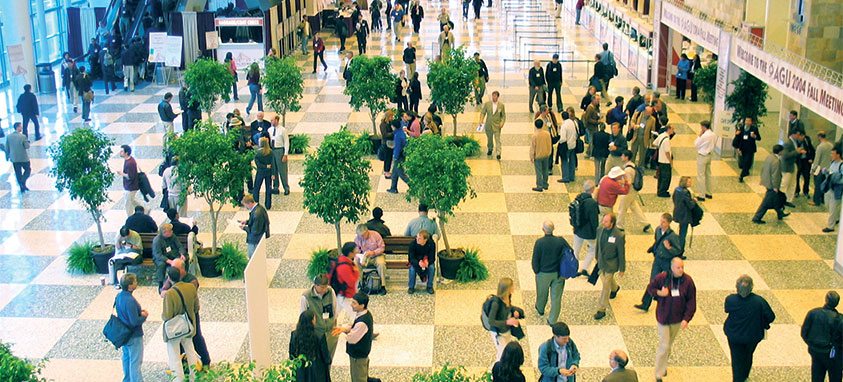
The City by the Bay regularly ranks as one of America’s greenest cities, in part for its walkability in the downtown core, where most major hotels are located. This year will see the opening of Virgin Hotel San Francisco as well as Yotel San Francisco, a high-concept, high-tech brand targeted to millennials in a historic building on Market Street that also houses Twitter and Square. Moscone Center is undergoing major expansion to offer a total of 1,084,447 sq. ft. of meeting space.
“San Francisco is a very diverse city, and cultural influences create a rich tapestry of neighborhoods, cuisines and celebrations,” says Tom David, executive vice president and chief sales officer for San Francisco Travel.
Seattle
This city of some 700,000, surrounded by water, mountains and evergreen forests, was recently named the nation’s top “hygge” (Danish for coziness and conviviality) city, for its love of books, coffee and fireplaces. But planners will find much more to see and do beyond coccooning—as befits its booming tech sector that is anchored by Microsoft and Amazon.
More than 10,000 hotel rooms are within 11 blocks of Washington State Convention Center, and 1,236 of them belong to the city’s largest hotel, the recently renovated Sheraton Seattle Hotel, which also offers 75,000 sq. ft. of meeting space steps from Pike Place Market and the Seattle waterfront.
Washington, D.C.
The plethora of museums and galleries in the nation’s capital offer prime opportunity for meeting planners, who can take advantage of downtown venues, such as National Museum of the Women in the Arts, Renwick Gallery, Smithsonian American Art Museum, National Portrait Gallery and Newseum.
“D.C.’s landscape will see major changes, with $11.8 billion in development underway and more than 4,000 hotel rooms in the pipeline,” says Elliott L. Ferguson II, president and CEO for Destination DC. “Walter E. Washington Convention Center is located downtown, incredibly convenient to dining and retail options, and within close proximity to outstanding off-site venues such as our iconic monuments, memorials and museums. One of D.C.’s most exciting neighborhoods for dining, Shaw, is also near the convention center.”
What’s Old is New Again
The hospitality sector is no slouch when it comes to recycling. That extends to the buildings that hotels occupy. In recent years, projects across the country have brought old buildings back to life and turned them into stylish hotels. Here are a few examples.

Boston: Located on Beacon Hill, the 298-room Liberty Hotel (pictured left) is located inside the refurbished Charles Street Jail, which was built in 1851 (giving new meaning to “breakout sessions”). Enjoy 14,000 total sq. ft. of indoor and outdoor space.
Denver: Built as part of the redevelopment of historic Union Station depot on the west end of downtown Denver, The Crawford Hotel has 112 guest rooms and a direct rail connection to Denver International Airport (DEN).
San Francisco: Opened in 2017, the 131-room San Francisco Proper (pictured below) is in an old flatiron building in the heart of the up-and-coming Mid-Market district. Groups can meet in a board room, conference room or private dining room.

Los Angeles: Last year saw the opening of NoMad Los Angeles, a hip 12-story hotel built inside the Neoclassical Giannini Place, which opened in the 1920s as Los Angeles headquarters for The Bank of Italy. Indoor and outdoor spaces encompass 10,000 sq. ft.
New York City: While not a hotel, Cipriani Wall Street is a stunning Lower Manhattan event space inside a Greek Revival building that once served as the home of New York Merchants Exchange and New York Stock Exchange.





